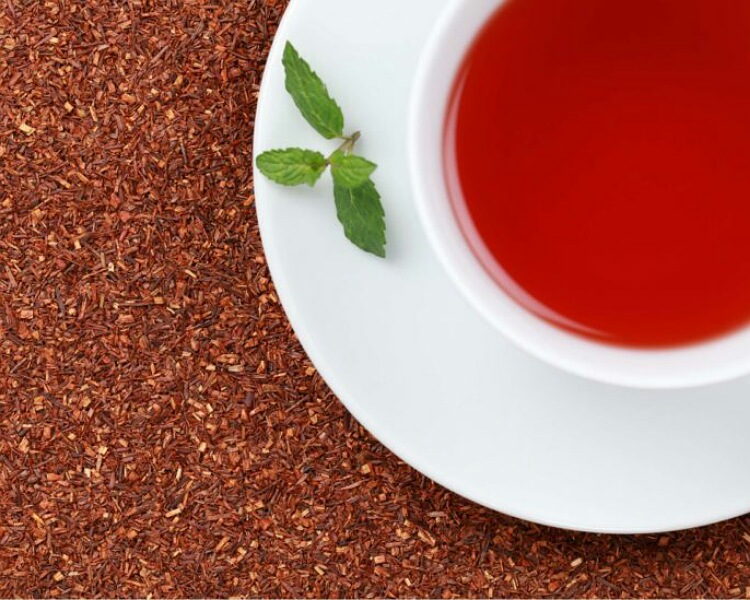Red tea is red bush tea or Rooibos. It is a traditional drink in Southern African nations. But it is slowly spreading and gaining popularity worldwide.
What is it made of? What are its health benefits? Is it better than black tea? Any safety points to be careful about?
Red tea or Rooibos
Red tea is also called red bush tea or Rooibos. It is a tisane or a concoction and not a tea technically. The ingredient is not from the tea plant or Camellia Sinensis.
But it comes from a shrub called Aspalathus linearis. This is commonly found on the western coast of South Africa and other countries in the southern area of the African continent. Therefore, it is a caffeine-free herbal tea.
It is not related in any way to black or green or white tea. It has no flavor and is a traditional drink in Africa in the southern regions. But it is gaining global acceptance now.

The leaves of the shrub are fermented and hence get the red-brown color that they impart to the concoction. There is a greener version of this and it is made from not fermented leaves of the shrub.
It boasts of more antioxidants and is, therefore, more expensive compared to the red tea. Its flavor is also grassier.
Ways of consumption and nutritive qualities
The leaves of the red tea are steeped in hot water and made into a concoction. And milk and sugar are added to this similar to that in the black tea.
Nowadays, red iced tea, espressos, cappuccinos, and lattes are also available and have high sales.

Red tea has a lot of antioxidants that make it good for health. But though there are claims that it has a lot of minerals and vitamins, this is not so.
However, the tea leaves have copper and fluoride. It has low amounts of tannins and is free of caffeine and oxalic acid.
Health benefits and safety
Due to no caffeine, it is a good alternative to green or black tea for people who get problems with the consumption of caffeinated drinks. Caffeine is good in moderate amounts and can help concentration and mood.
But in higher amounts, it could lead to palpitations, anxiety, insomnia, and even panic attacks. Due to low tannins, it does not interfere with iron absorption.
This is its plus point. Red tea also lacks the oxalic acid which is found in regular tea. Oxalic acid can cause kidney stones and hence red tea is beneficial for patients with such stones.

Like black tea, it also has antioxidants that promote health. **They dilute the bad effects of the free radicals and thus overcome inflammation, cancer cell formation, and chronic diseases such as atherosclerosis, diabetes, etc.
But these antioxidants of red tea are not absorbed well and also last for a short time in the body.
Red tea can lower bad cholesterol and also inhibits the action of angiotensin-converting enzyme or ACE. This relaxes the blood vessels and is good for the heart. In vitro studies have shown the beneficial effects of red tea antioxidants quercetin and luteolin in killing cancer cells.
But the amount of these is lesser in red tea compared to that in fruits and vegetables. Mice studies have shown its benefits in reducing insulin resistance and improving blood sugar levels. But it requires human studies for confirmation.
Read more: What is a ginger infusion? Preparation, health benefits, and side effects!
Its benefits in improving bone and gut health also need verification. Excessive drinking can increase liver enzymes. It increases the production of the female sex hormone estrogen.
Therefore, patients with breast cancer should not consume red tea. Overall, it is a safe drink.
